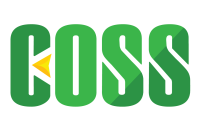The Finnish Board of Education funds the Dream School project – a school to school network – that focuses on developing new ways for use and procurement of open technologies. Already 15 schools have joined the national project. “By the end of this year we will have doubled the number of schools and the first international pilots are starting this year”, says Allan Schneitz, the project’s coordinator and a teacher at the Kasavuori School in Kauniainen, Finland.
He estimates that since 2008 the Finnish Board of Education has granted the Dream School project about a half a million euros for building up an open platform for cloud services and the open concepts around it. During the past two years the core technology has matured from a proof-of-concept into a real product, with a number of applications that are ready to be run as an online service.
The use of open technology and open API’s are at the heart of the used technology. The Dream Platform brings new, user centered dimensions to the public sector procurement processes. The platform enables each user to connect open source applications and services of their choice to the Dream Platform, thus bypassing centralized, complicated and impersonal procurement of expensive and potentially suboptimal services.
In January this year, a public tendering process was launched as a part of the FNBE funded Dream School project. According to Schneitz its clear and simple aim was to develop new operating models based on open source technology. As a public financier the FNBE also specified that all extra features developed during the contract period had to be published as open source.
In a joint press-statement published last week, the Dream School and Haltu, who was granted a multiyear contract for the software development, describe these requirements as ground-breaking for the country’s public sector. The requirement to use open API’s enables seamless integration of services provided by various entities. Suppliers are in equal position and the client can easily choose its preferred suppliers.
Schneitz says that the big advantage of Software as a Service (SaaS), is that new features can be added without having to install software on school PCs. ”That made a cloud solution a natural choice.” Future extensions are to be made available under the Open BSD licence. ”That way, ICT solutions providers can use the new features also in commercial settings.” Schneitz concludes.
The Dream School’s cloud procurement model is studied by VTT Technical Research Centre of Finland and the results of their study will be published in the summer of 2013.
More information:
- Allan Schneitz, Co-ordinator of the national pilot of the Dream School services, Kasavuori School, +358 41 503 2119, allan.schneitz@unelmakoulu.fi
- Dream School, http://www.dreamschool.eu/
- Press announcement, http://haltu.fi/press/2013-04-10-dreamschool
